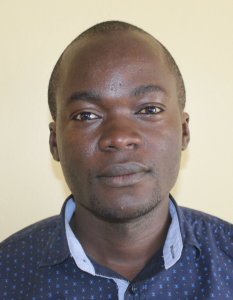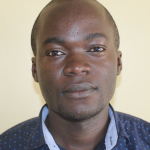"Lack of clean and safe water in this community has been like a thorn in the flesh. We have for decades suffered a lot; premature deaths have always occurred in this community, causing parents to lose their breadwinners and most have ended up spending a lot of resources to cater for medication - leaving them very poor," shared Mr. John Lumbasia.
There are 420 living in Sambuli who drink dirty water on a daily basis. This water comes from Nechesa Spring, a source that has pooled to the surface nearby. The spring is entirely open to all sorts of contamination. It is heartbreaking to see people fetching this water and drinking it immediately without treating it.
Lack of safe water in the community has increased the rates of water-related issues such as typhoid and diarrhea. These issues have kept students out of school, which has negatively impacted their academics. Community members have been forced to use a lot of resources for medication.
Sambuli is a typical rural area, peaceful with the only loud noises coming from the domestic animals and birds. The area is covered with green vegetation and looks very lush. Majority of the buildings are made of mud and roofed with iron sheets. A few are grass-thatched that mostly belong to the older people.
Most of the community members depend on farming produce; vegetables, maize and beans for their own families and the surplus for trade. They also practice poultry production and dairy farming at a small scale.
What we can do:
Training
Community members will attend hygiene and sanitation training for at least two days. This training will ensure participants have the knowledge they need about healthy practices and their importance. The facilitator plans to use PHAST (Participatory Hygiene and Sanitation Transformation), CLTS (Community-Led Total Sanitation), ABCD (Asset-Based Community Development), group discussions, handouts, and demonstrations at the spring. One of the most important topics we plan to cover is the handling, storage, and treatment of water. Having a clean water source will be extremely helpful, but it is useless if water gets contaminated by the time it’s consumed.
Training will also result in the formation of a committee that will oversee operations and maintenance at the spring. They will enforce proper behavior around the spring and delegate tasks that will help preserve the site, such as building a fence and digging proper drainage. The fence will keep out destructive animals, and the drainage will keep the area’s mosquito population at a minimum.
Sanitation Platforms
"The current state of hygiene and sanitation in our community is still low," divulged Mrs. Elizabeth Munasia.
"A few homes are forced to go to the bush due to lack of latrines, open defecation is mostly spotted. We have in return suffered a lot and our health status has deteriorated for decades."
Less than 70% of households using Nechesa Spring have their own private place to use the bathroom. The majority of the pit latrines we visited are made of mud, which is extremely difficult to keep clean. The smell is unbearable without ventilation.
On the final day of training, participants will select five families that should most benefit from new latrine floors.
Training will also inform the community and selected families on what they need to contribute to make this project a success. They must mobilize locally available materials, such as bricks, clean sand, hardcore, and ballast. The five families chosen for sanitation platforms must prepare by sinking a pit for the sanitation platforms to be placed over. All community members must work together to make sure that accommodations and food are always provided for the work teams.
Spring Protection
Protecting the spring will ensure that the water is safe, adequate and secure. Construction will keep surface runoff and other contaminants out of the water. With the community’s high involvement in the process, there should be a good sense of responsibility and ownership for the new clean water source.
Fetching water is predominantly a female role, done by both women and young girls. Protecting the spring and offering training and support will, therefore, help empower the female members of the community by giving them more time and efforts to engage and invest in income-generating activities.

 Protected Spring
Protected Spring
 Rehabilitation Project
Rehabilitation Project









































